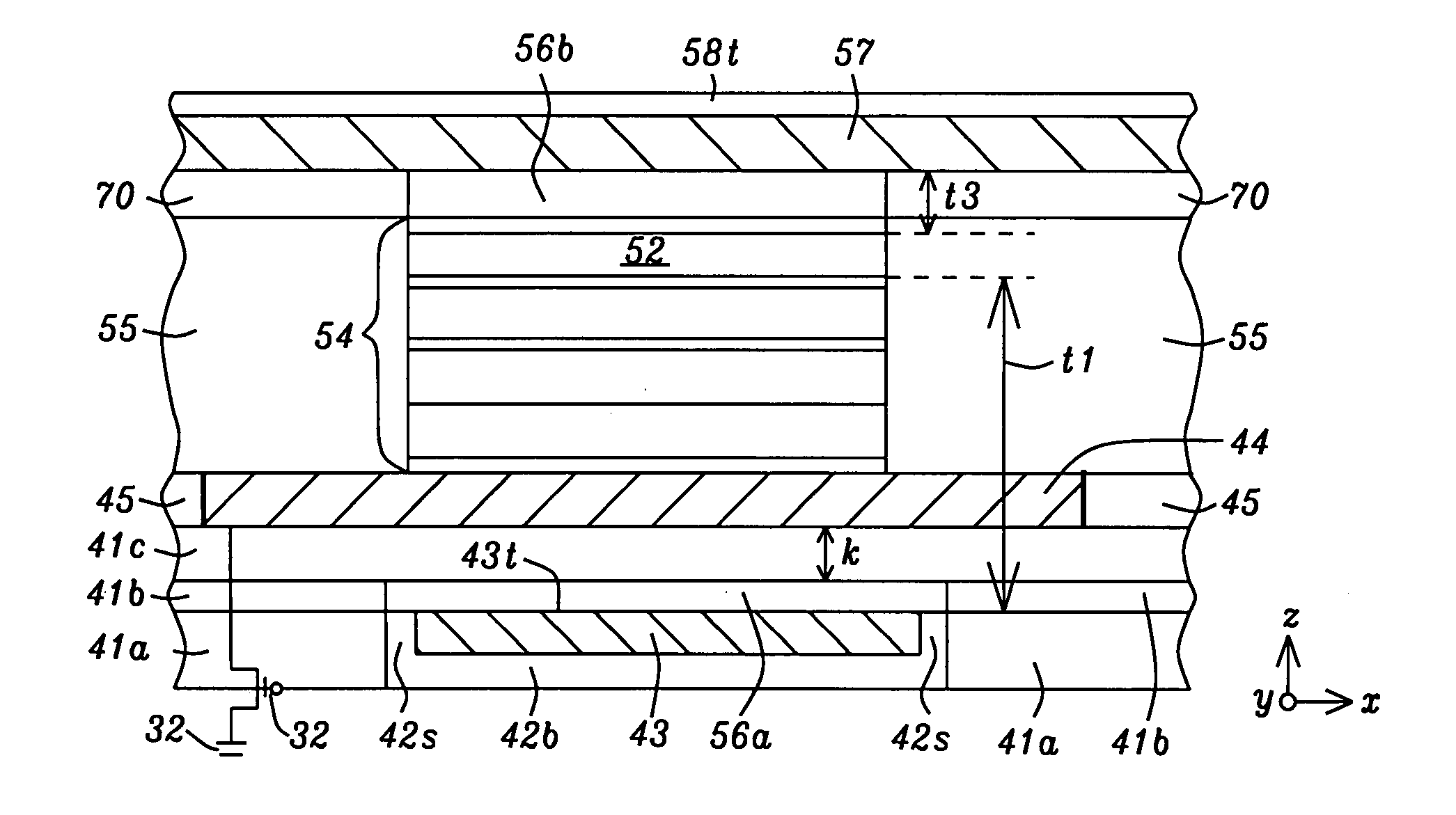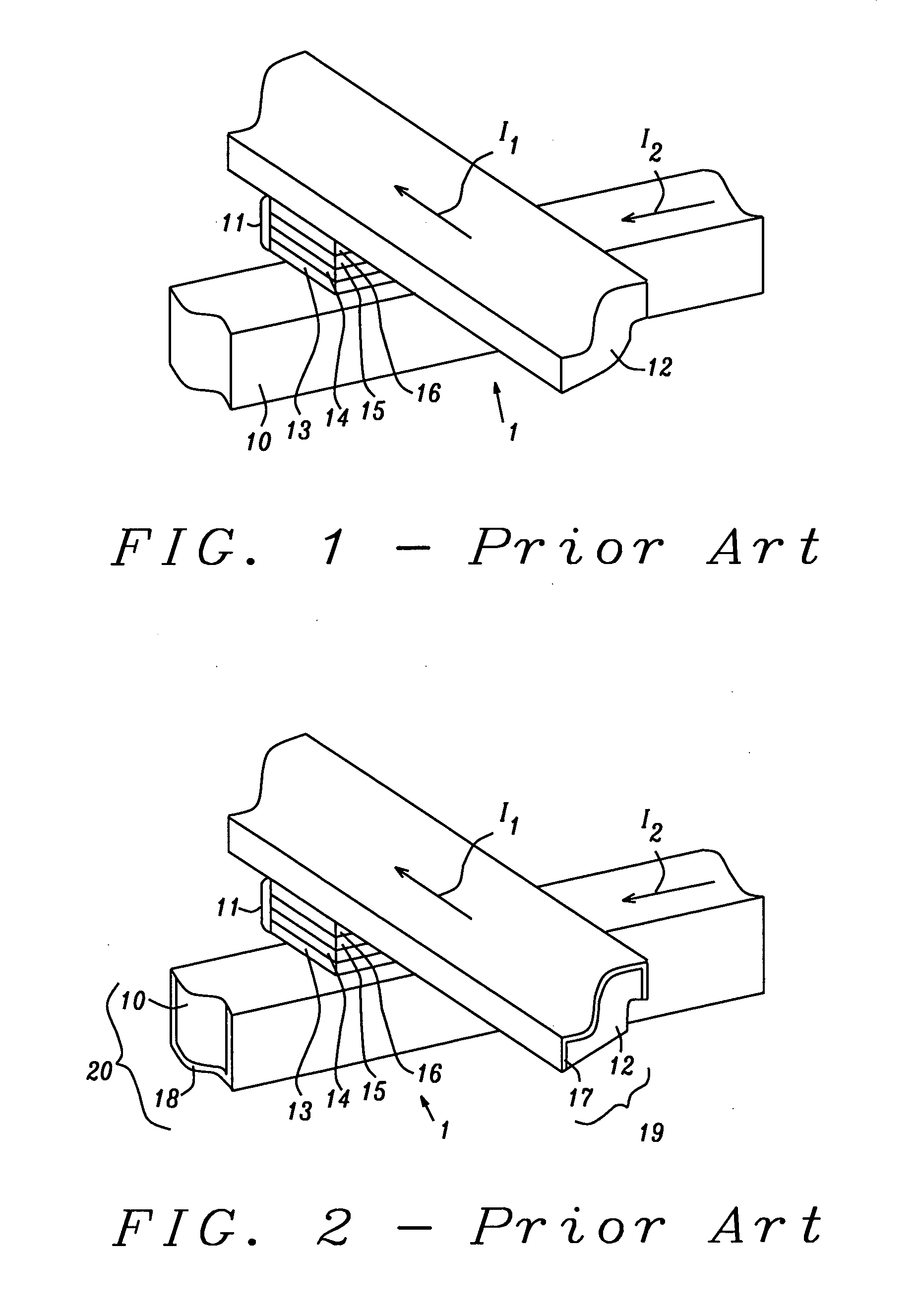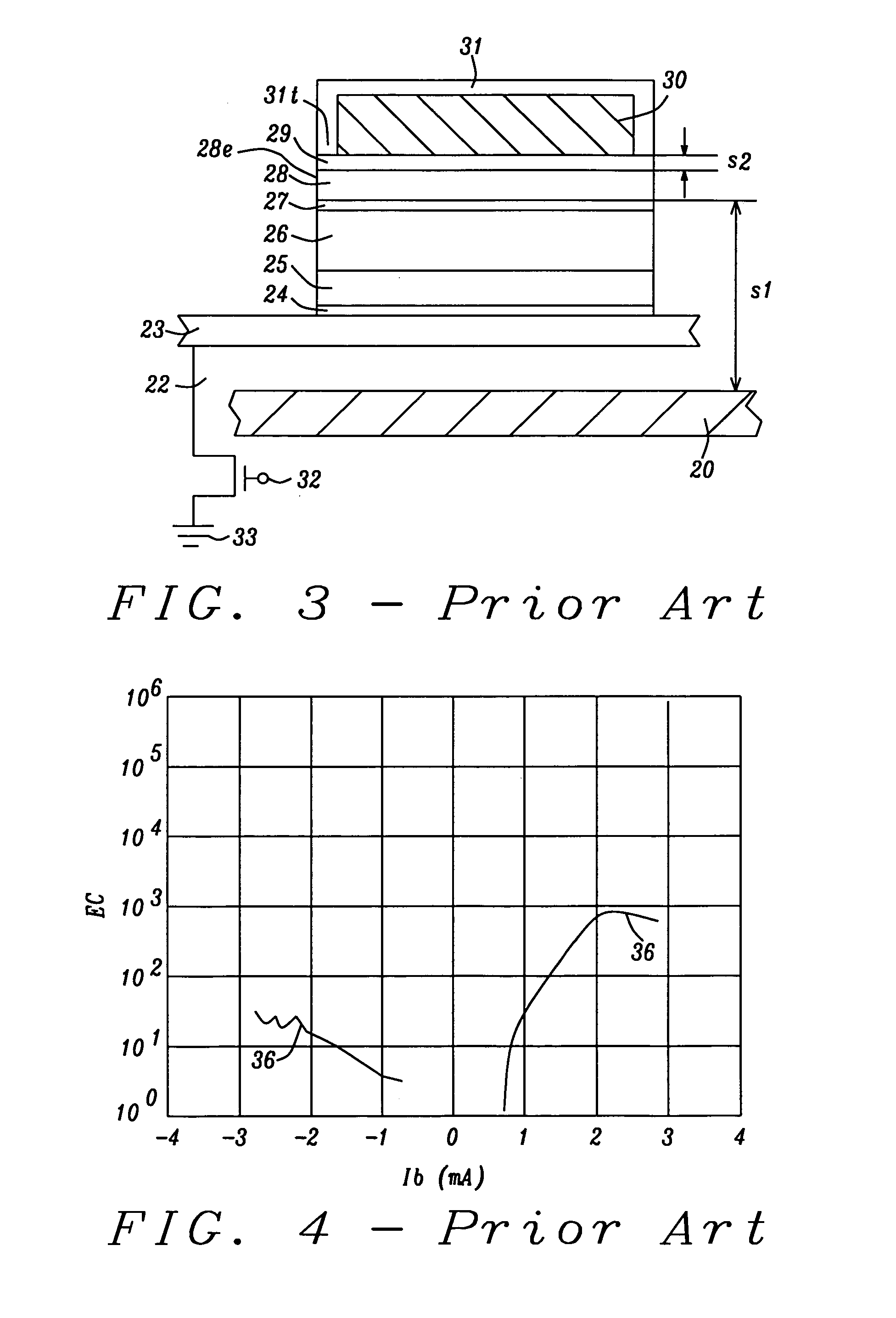Design and fabrication methods of partial cladded write line to enhance write margin for magnetic random access memory
a random access memory and write line technology, applied in the field of mram design, can solve the problems of increasing the writing current proportionally, which is not desired for high density memory devices, and limiting the supply of available current, and the tendency of half-selected bits to be disturbed into the wrong sta
- Summary
- Abstract
- Description
- Claims
- Application Information
AI Technical Summary
Benefits of technology
Problems solved by technology
Method used
Image
Examples
second embodiment
[0041]The present invention also encompasses a second embodiment wherein a spacing control layer 56 is formed between a cladded word line and a free layer in a MTJ element with a top pinned layer configuration. In FIG. 6, MRAM cell 40 is modified to show a MTJ stack of layers in which a seed layer 46, free layer 52, tunnel barrier layer 51, AP1 layer 50, coupling layer 49, AP2 layer 48, AFM layer 47, and capping layer 53 are sequentially formed with a top pinned layer structure on BE 44. Cladded bit line 57 contacts a top surface of capping layer 53. In this MRAM structure, free layer 52 is located closer to word line 42 than to bit line 57 (t58). Thus, the spacing control layer 56 is formed between word line 42 and free layer 52 in order to control the distance t5 within a certain range of 0.03 to 0.15 microns.
[0042]In the exemplary embodiment, a bottom surface of spacing control layer 56 contacts a top side 43t of word line 43 that faces BE 44. There is a thin section of dielectri...
first embodiment
[0047]A second spacing control layer 56b is formed between a top surface 53s of capping layer 53 and a side of bit line 57 facing the top surface 53s as described with respect to spacing control layer 56 in the In this case, the second spacing control layer 56b is used to control the distance s3 between bit line 57 and a top surface of free layer 52. Second spacing control layer 56b has a thickness between 0.02 and 0.12 microns to maintain a distance s3 of 0.03 to 0.15 microns between the bit line 57 and free layer 52, and is preferably comprised of the same highly conductive non-magnetic material as in spacing control layer 56 described previously.
[0048]A fourth embodiment of the present invention is depicted in FIG. 8 and represents a modification of the third embodiment where the dual pinned layer MTJ element 84 is replaced by a single pinned layer MTJ element 54. Although the exemplary embodiment depicts a bottom pinned layer configuration for MTJ 54, the present invention also...
PUM
 Login to View More
Login to View More Abstract
Description
Claims
Application Information
 Login to View More
Login to View More - R&D
- Intellectual Property
- Life Sciences
- Materials
- Tech Scout
- Unparalleled Data Quality
- Higher Quality Content
- 60% Fewer Hallucinations
Browse by: Latest US Patents, China's latest patents, Technical Efficacy Thesaurus, Application Domain, Technology Topic, Popular Technical Reports.
© 2025 PatSnap. All rights reserved.Legal|Privacy policy|Modern Slavery Act Transparency Statement|Sitemap|About US| Contact US: help@patsnap.com



